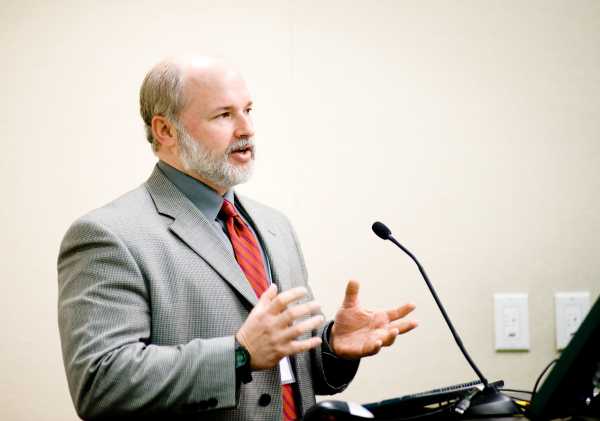
Professor Schwartzman offers an elective to undergraduate seniors mostly majoring in communication studies as well as students majoring in other disciplines. The course is specifically structured around several different voices. It begins with Nazi-era propaganda approached from several different media: written, audio, and visual. Much of the course is the survivor testimony component, together with films about the Holocaust. The course then focuses on memory and memorialization, concluding with confronting the phenomenon of Holocaust denial and the role testimonials play in refuting it.
The class is framed with three intertwined components comprising:
- an advanced undergraduate course, Voices of the Holocaust, which relies heavily on testimonies from the VHA;
- an ongoing scholarly research endeavor, the AfterWords Project, involving undergraduate and graduate-student researchers who investigate the structure, style, and content of Holocaust survivor and witness narratives of resettlement in the United States;
- a collaborative service project with the North Carolina Council on the Holocaust and the North Carolina Center for the Advancement of Teaching, which develops multimedia educational resources for use in school classrooms and on the Web.
In the final course project, students choose between a research project and a creative project. Students who select the creative project are matched one-on-one with a particular survivor’s testimony. They have to come up with a creative project that will be used as educational materials to understand Holocaust experiences more deeply. The products of their efforts supply some of the resources for the collaborative service project with the North Carolina Council on the Holocaust.
The philosophy that guides this methodology in using audio-visual materials in this course is done not so much as historical documentation but as living communication. In other words, Professor Schwartzman emphasizes that “the goal is to move the Holocaust from being a discrete historical event to restorying the Holocaust as an ongoing process of narrative development. The Holocaust is a continuing set of experiences that transcend time, and it transcends the particularity of individual survivor’s experiences.”14 Students experience this transcendence when they start feeling a personal investment and commitment to the particular testimonial that they develop as an introduction to this individual for their final projects. The objective of restorying the Holocaust is approached by looking at multiple data points, such as: new interviews, the VHA testimonials, fragments of quotes from the survivors when they speak publicly, and key stories told by their children that are memorable moments to craft a deeper and more multidimensional understanding of the individual. Some of the methodological approaches to the testimonials include:
- one-on-one engagement with survivors and their stories;
- reconceiving the narrative as an organic process and not simply a static document—recovering the performative aspects of the narrative;
- micronarrative analysis through close textual analysis;
- macronarrative theories to cope with the puzzles in the narratives;
- meta-narrative comparisons, classifications, and corroborations.
Professor Schwartzman uses VHA testimonies intertwined with the AfterWords Project, which involves gathering new testimonials from survivors’ resettlement experiences following the war. This aspect of the Holocaust supplies another important set of narratives by intertwining newly gathered testimonies with what is found in the VHA. It is important to move students toward understanding that this is not a set of documents that happen to be videotaped but are living organic narratives that have as much of a life as they can be given by scholars, by other survivors in terms of how their testimonies interact intertextually with each other, and by multigenerational folk and beyond. Students who are educated through the North Carolina secondary public education system are usually introduced to two texts: Elie Wiesel’s Night and The Diary of Anne Frank. These texts have become the canon, or core reference points, for understanding the Holocaust. Students tend to believe that these iconic stories define the Holocaust experience. Through the work that is done in the course, the research, and the collaborative service project, students move beyond these iconic stories of Night and The Diary of Anne Frank by expanding the base level of what constitutes the boundaries of Holocaust experiences and adding
complexity to the victim, perpetrator, and bystander categories. Through the AfterWords research project, the VHA, and newly gathered testimonies have multiple ways of experiencing encounters with survivors.
Students in the course listen to testimony of individual survivors and make their own observations of the testimony by explaining the relationship established between the survivor as narrator of the story and the survivor as a character in his or her own narrative. They then address questions such as:
- How do these identities of narrator and character intersect or differ?
- What insights does the narrator/character relationship provide about the survivor’s understanding of history and storytelling?
Through this process students find a deeper level of engagement with issues regarding the Holocaust. Student research for the AfterWords Project won the 2009 university-wide award for Outstanding Undergraduate Research Project in the Humanities, and four student researchers gave presentations at the 2009 Carolinas Communication Association Convention. Students in the Voices of the Holocaust course have developed the pilot materials for the online educational resources offered in conjunction with the North Carolina Council on the Holocaust.